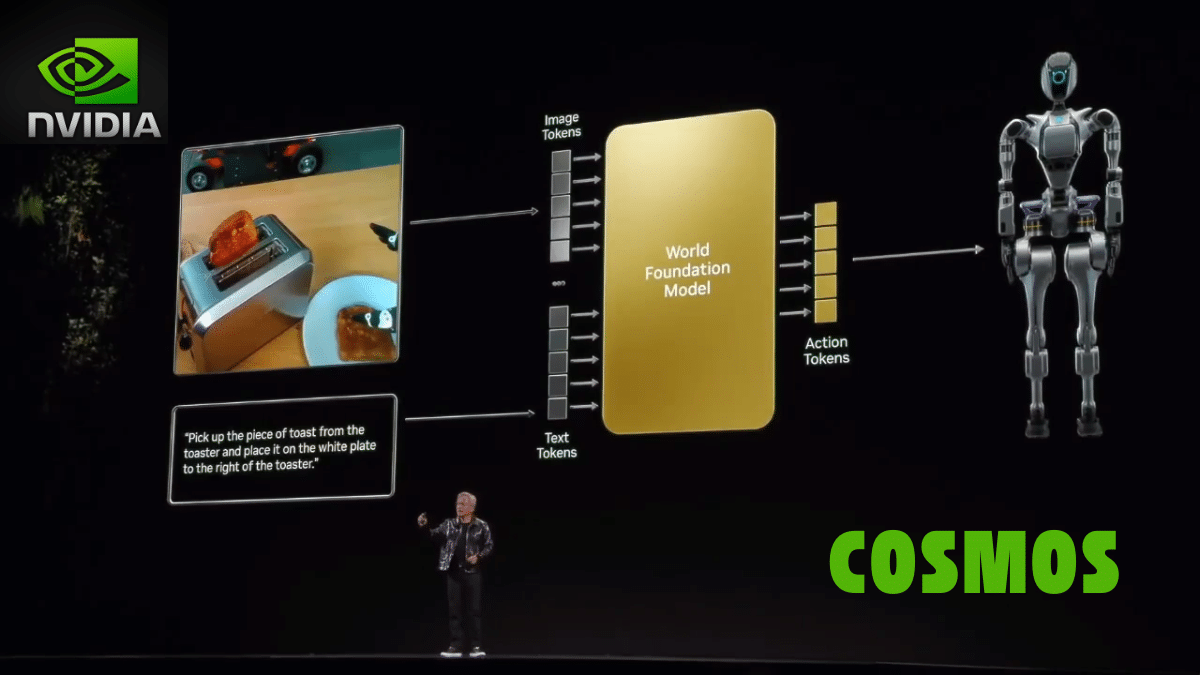Nvidia Unveils Cosmos AI Platform

At the Consumer Electronics Show (CES) 2025, Nvidia introduced its latest innovation: the Cosmos platform. This advanced artificial intelligence platform is designed to host multiple generative world foundation models (WFMs). These models are not just theoretical constructs; they have practical applications in developing physical AI systems, such as autonomous vehicles and robots. The platform also includes advanced tokenisers, an accelerated video processing pipeline, and essential guardrails for safety and efficiency. In a significant move, Nvidia has open-sourced the WFMs, making them available for academic and research purposes. Alongside Cosmos, Nvidia also launched the Llama Nemotron family of AI models, further expanding its AI offerings.
Nvidia Cosmos World Foundation Models
Nvidia’s Cosmos platform is a game-changer in the field of artificial intelligence. It focuses on hosting world foundation models that are crucial for training and developing physical AI systems. These systems are not merely software; they involve machines with mechanical components capable of interacting with the real world. The development of such systems is often expensive and time-consuming. It requires vast amounts of real-world data and diverse testing environments. The Cosmos platform addresses these challenges effectively.
The WFMs in the Cosmos platform can generate large volumes of photorealistic and physics-based synthetic data. This data is invaluable for training physical AI systems, allowing developers to simulate various scenarios without the need for extensive real-world testing. Moreover, the platform enables developers to assess existing robots by placing them in controlled testing environments. This capability is crucial for refining and improving robotic performance.
Another significant feature of the Cosmos platform is its ability to allow developers to create custom models by fine-tuning the WFMs. This flexibility means that companies can tailor AI solutions to meet their specific needs. The platform also includes video search and understanding capabilities, making it easier for developers to locate relevant training videos within a vast database. By leveraging the Nvidia Omniverse platform, developers can generate controlled 3D scenarios for simulation-based training, enhancing the effectiveness of their AI systems.
Open Source and Industry Adoption
Nvidia’s decision to open-source the Cosmos WFMs is a strategic move aimed at fostering innovation in the AI community. By making these models available under an open model license, Nvidia encourages academic institutions and researchers to explore new applications and advancements in AI technology. Developers can access the models through Nvidia’s application programming interface (API) catalogue or platforms like Hugging Face, making it easier to integrate these powerful tools into their projects.
Several companies focused on robotics and physical AI have already embraced the Cosmos platform. Notable adopters include 1X, Agile Robots, Agility, Figure AI, Foretellix, Fourier, Galbot, Hillbot, IntBot, Neura Robotics, Skild AI, Virtual Incision, Waabi, XPENG, and Uber. These companies recognize the potential of the Cosmos platform to enhance their AI capabilities and streamline the development of autonomous systems.
The rapid adoption of the Cosmos platform by industry leaders highlights its significance in the evolving landscape of artificial intelligence. As more organizations leverage these advanced models, we can expect to see significant advancements in the capabilities of physical AI systems, paving the way for a future where robots and autonomous vehicles become integral parts of our daily lives.
Observer Voice is the one stop site for National, International news, Sports, Editor’s Choice, Art/culture contents, Quotes and much more. We also cover historical contents. Historical contents includes World History, Indian History, and what happened today. The website also covers Entertainment across the India and World.

